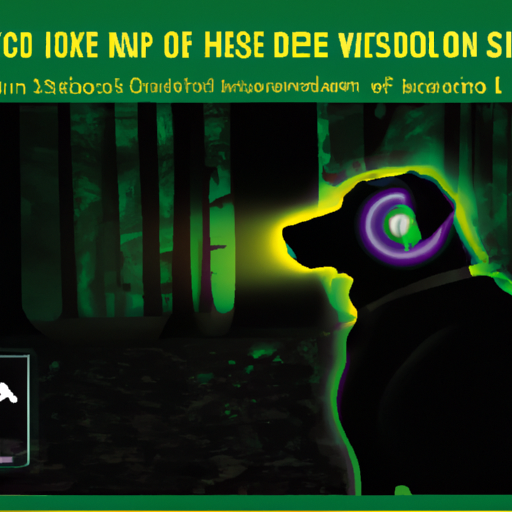Understanding Your Dog’s Vision
As a caregiver, you’re always concerned about the comfort and safety of your loved ones, and that includes your four-legged family members. You may have wondered how your dog navigates effortlessly through your dimly lit house. Well, your dog’s night vision capability is much better than yours, and here’s why:
Dogs’ eyes contain a special layer of cells called the tapetum lucidum. This layer reflects light back through the retina, effectively boosting the amount of light available for the eye to process. This is what gives your dog those brilliant, glowing eyes in the dark.
The Science Behind Their Night Vision
Dogs see in the dark better than humans for a couple of reasons:
- Rod cells: Dogs have more of these light-sensitive cells in their eyes than humans do, which increases their ability to see in low light.
- Pupillary light reflex: Dogs’ pupils can dilate more than humans’, letting in more light and making them more sensitive to lower light conditions.
How to Improve Your Dog’s Night Vision
While dogs naturally have better night vision than us, there are a few ways you can improve their visibility and safety in the dark:
- Keep their living spaces well lit, especially if they are older or have vision problems.
- Use reflective gear or LED accessories when walking them at night.
- Regular eye check-ups can help detect and correct vision issues early.
Comparing Human and Dog Night Vision
The following table gives a comparative understanding of the night vision capabilities of dogs and humans:
| Aspect | Human | Dog |
|---|---|---|
| Color Perception | Full spectrum | Blue and yellow |
| Visual Acuity | High | Low |
| Night Vision | Limited | Enhanced |
FAQ
Q: Do all dogs have the same night vision capabilities?
A: No, night vision capabilities can vary among different breeds of dogs. Typically, breeds that were originally hunting dogs tend to have better night vision.
Q: Can dogs see in complete darkness?
A: No, dogs cannot see in complete darkness. They need some amount of light to see.
Q: How can I tell if my dog is having trouble seeing in the dark?
A: If your dog is hesitant to move around in low light or bumps into things, they might be having difficulty seeing in the dark. Consult with a veterinarian for an eye exam.
Remember, as a caregiver, being informed about your dog’s vision will help you ensure their comfort and safety at all times. So, keep these points in mind, and give your furry friend the best care possible!



